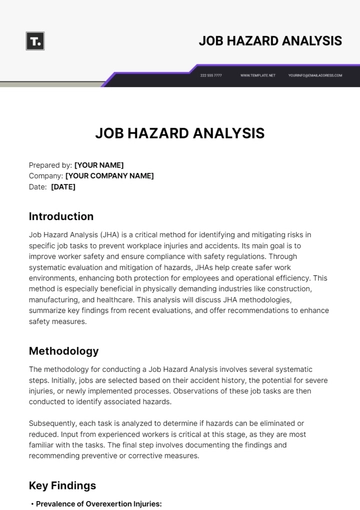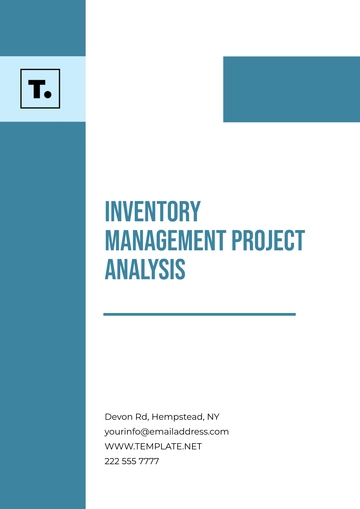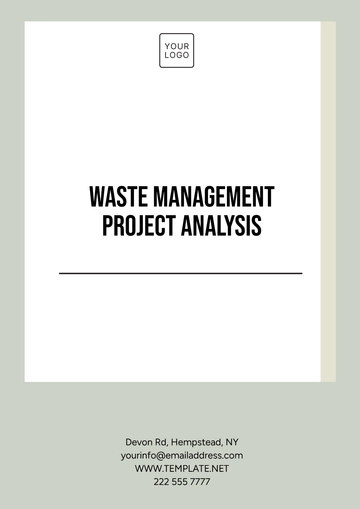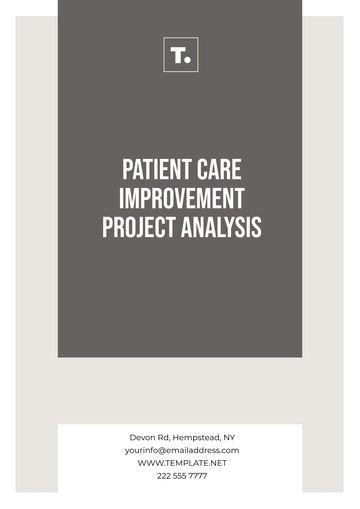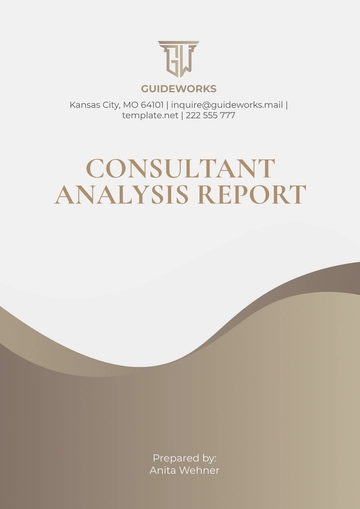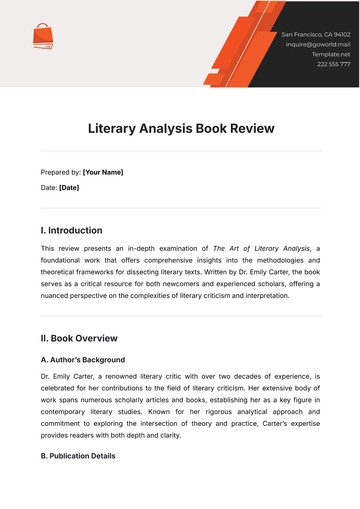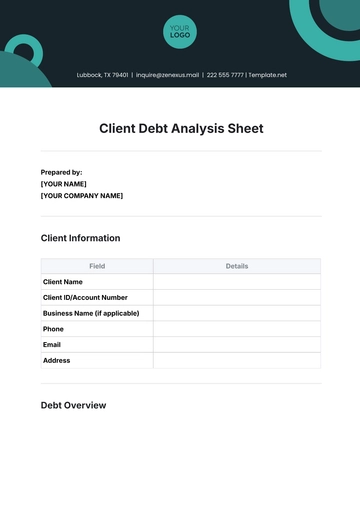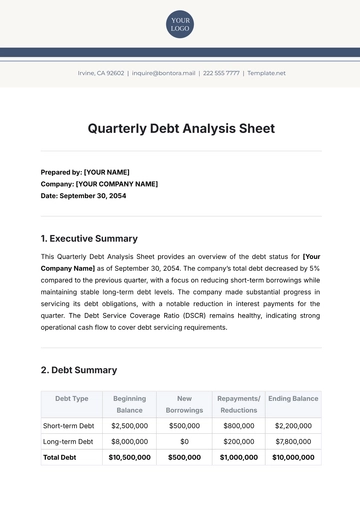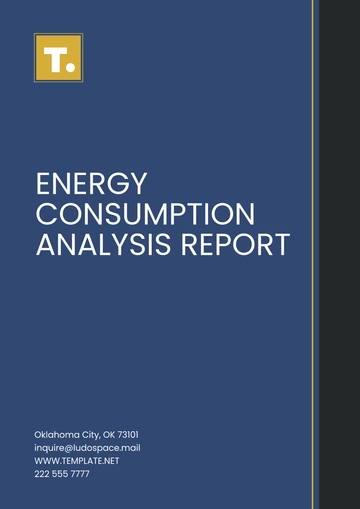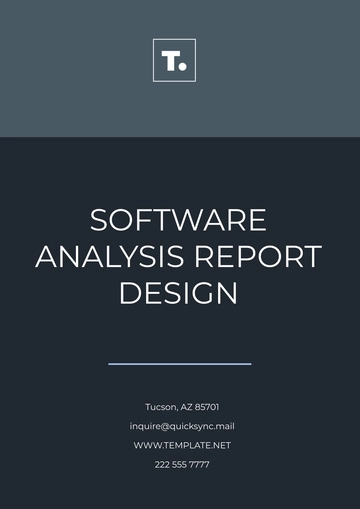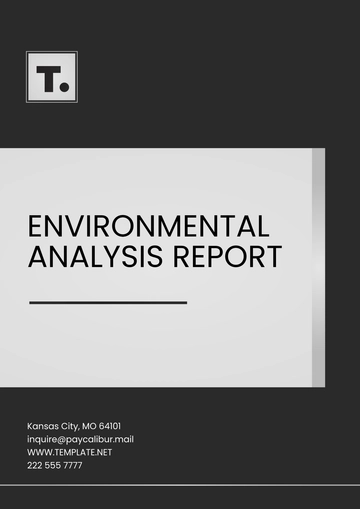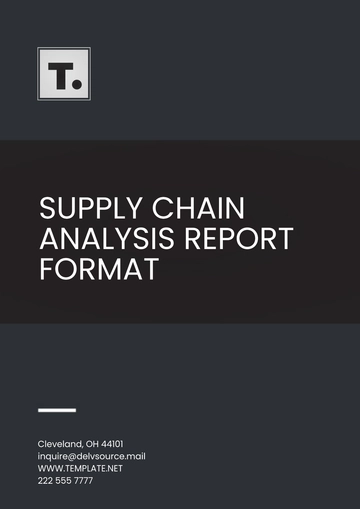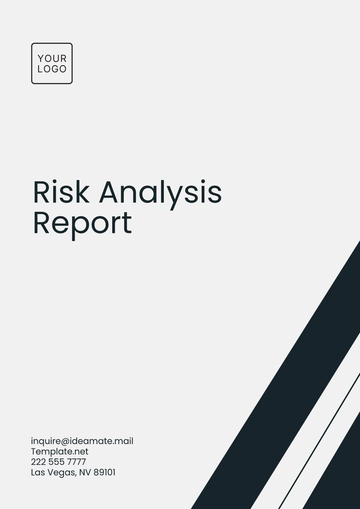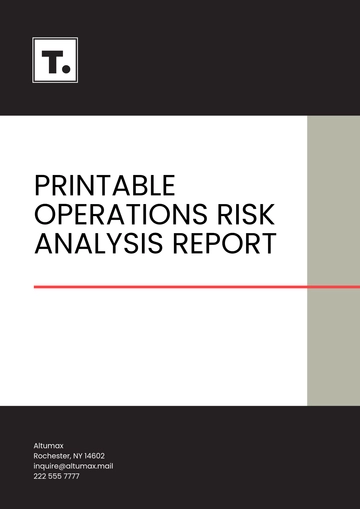Free Agriculture Cash Flow Analysis
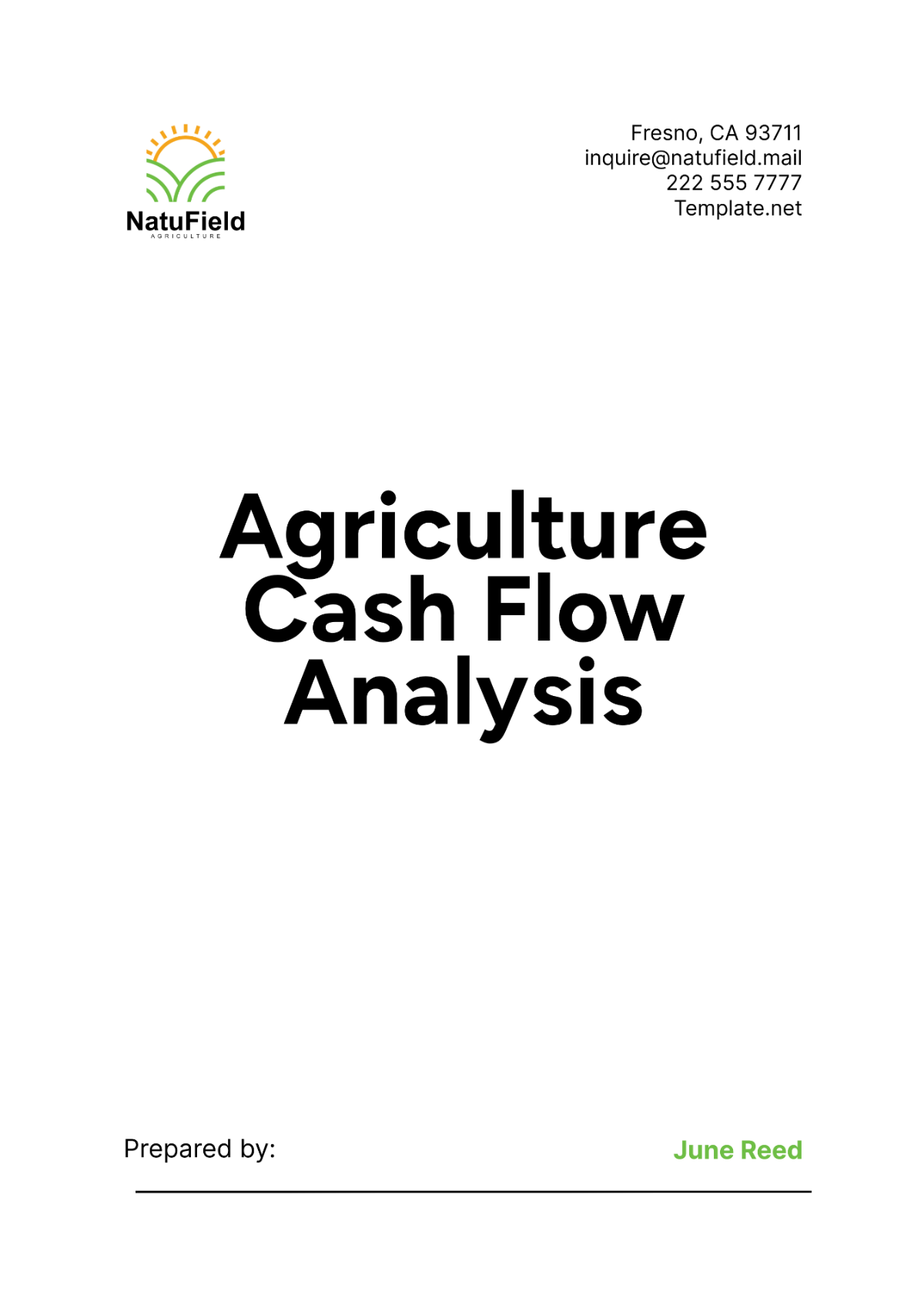
I. Introduction
A. Purpose
The purpose of this Agriculture Cash Flow Analysis is to provide a comprehensive overview of the cash flow dynamics within [Your Company Name]. This analysis aims to identify patterns, challenges, and opportunities in managing cash flows to ensure financial stability and growth.
B. Scope
This analysis covers various aspects of our agricultural operations, including revenue generation, expense management, investment activities, and financing. It provides insights into the financial health of [Your Company Name] and guides strategic decision-making.
C. Objectives
The primary objectives of this cash flow analysis are:
Assess Financial Performance: Evaluate the cash inflows and outflows to understand the financial performance of our agricultural operations.
Enhance Cash Management: Provide recommendations to enhance cash management practices and ensure adequate liquidity.
Support Strategic Planning: Support strategic planning by providing a clear picture of cash flow dynamics and financial health.
II. Revenue Analysis
A. Revenue Streams
The following chart and table outline the key revenue streams for [Your Company Name]:
Revenue Stream | Description | Monthly Revenue |
|---|---|---|
Crop Sales | Income from selling harvested crops | $120,000 |
Livestock Sales | Income from selling livestock | $80,000 |
Dairy Products | Income from selling dairy products | $45,000 |
Government Subsidies | Financial support from government programs | $20,000 |
Other Income | Income from secondary activities (e.g., workshops) | $15,000 |
Total | $280,000 |
Crop Sales: Income from selling harvested crops constitutes the largest portion of our revenue, amounting to $120,000 monthly. This reflects the productivity and market demand for our primary agricultural products.
Livestock Sales: Income from selling livestock generates $80,000 monthly, contributing significantly to our revenue. Livestock sales include meat, poultry, and other animal products.
Dairy Products: Revenue from selling dairy products, such as milk and cheese, totals $45,000 monthly. This stream highlights the diversification of our agricultural operations.
Government Subsidies: Financial support from government programs provides $20,000 monthly, aiding in operational sustainability and growth.
Other Income: Secondary activities, including workshops and agritourism, generate $15,000 monthly. These activities supplement our primary revenue streams.
The primary revenue streams indicate the diversity and robustness of our agricultural operations. Crop and livestock sales are the main contributors, while dairy products, government subsidies, and other income provide additional financial support. This diversified revenue base enhances financial stability and resilience. Understanding the proportions of each stream helps in strategic planning and resource allocation. Ensuring consistent performance across all streams is crucial for sustaining overall financial health.
B. Seasonal Variations
Peak Seasons: Identify peak seasons for crop and livestock sales. These periods typically generate higher revenue due to increased market demand.
Off-Peak Seasons: Recognize off-peak seasons where revenue may decline. Understanding these variations helps in planning for cash flow management.
Market Trends: Analyze market trends to anticipate changes in revenue streams. Market analysis aids in strategic planning and decision-making.
Revenue Forecasting: Use historical data to forecast future revenue. Accurate forecasting supports financial planning and resource allocation.
Seasonal variations in revenue are influenced by peak and off-peak seasons, market trends, and revenue forecasting. Understanding these variations is crucial for effective cash flow management. Accurate revenue forecasting helps in anticipating financial needs and ensuring liquidity during off-peak periods. Market trends analysis provides insights for strategic adjustments to maximize revenue opportunities.
III. Expense Analysis
A. Operating Expenses
The following table outlines the major operating expenses for [Your Company Name]:
Expense Category | Description | Monthly Expense |
|---|---|---|
Labor Costs | Wages and benefits for employees | $75,000 |
Equipment Maintenance | Costs for maintaining agricultural equipment | $30,000 |
Fertilizers and Pesticides | Expenses for fertilizers and pesticides | $25,000 |
Utilities | Costs for electricity, water, and other utilities | $20,000 |
Feed and Veterinary Care | Costs for livestock feed and veterinary services | $15,000 |
Total | $165,000 |
Labor Costs: Wages and benefits for employees amount to $75,000 monthly. Labor is essential for daily operations, including planting, harvesting, and animal care.
Equipment Maintenance: Maintenance of agricultural equipment incurs a monthly expense of $30,000. Regular maintenance ensures operational efficiency and reduces downtime.
Fertilizers and Pesticides: Monthly expenses for fertilizers and pesticides total $25,000. These inputs are crucial for crop health and productivity.
Utilities: Costs for electricity, water, and other utilities amount to $20,000 monthly. Utilities are necessary for powering equipment and maintaining facilities.
Feed and Veterinary Care: Expenses for livestock feed and veterinary services total $15,000 monthly. Proper nutrition and healthcare are vital for livestock productivity.
Operating expenses highlight the significant costs associated with labor, equipment maintenance, fertilizers and pesticides, utilities, and livestock care. Efficient management of these expenses is essential for maintaining profitability and ensuring the smooth functioning of agricultural operations. Monitoring these expenses regularly helps in identifying cost-saving opportunities. Effective expense control measures contribute to improved cash flow and financial health.
B. Cost Management Strategies
Expense Monitoring: Regularly monitor expenses to identify areas for cost reduction. Expense tracking helps manage cash flow and maintain financial health.
Bulk Purchasing: Purchase inputs like fertilizers and feed in bulk to benefit from economies of scale. Bulk purchasing reduces per-unit costs and overall expenses.
Energy Efficiency: Implement energy-efficient practices to reduce utility costs. Energy conservation measures lower operational expenses.
Preventive Maintenance: Conduct preventive maintenance for equipment to avoid costly repairs and replacements. Regular maintenance extends equipment lifespan.
Supplier Negotiations: Negotiate favorable terms with suppliers to reduce input costs. Strong supplier relationships contribute to cost savings.
Cost management strategies such as expense monitoring, bulk purchasing, energy efficiency, preventive maintenance, and supplier negotiations are crucial for controlling expenses and enhancing profitability. Implementing these strategies helps in maintaining a balance between cost and productivity. Efficient cost management supports sustainable growth and financial stability.
IV. Investment Activities
The following table outlines recent capital expenditures for [Your Company Name]:
Investment Category | Description | Investment Amount |
|---|---|---|
Land Acquisition | Purchase of additional agricultural land | $500,000 |
Machinery Upgrade | Upgrade of farming machinery and equipment | $250,000 |
Irrigation Systems | Installation of advanced irrigation systems | $150,000 |
Technology Adoption | Implementation of precision agriculture technology | $100,000 |
Facility Expansion | Expansion of storage and processing facilities | $200,000 |
Total | $1,200,000 |
A. Land Acquisition
The purchase of additional agricultural land involves an investment of $500,000. Expanding land holdings increases production capacity and potential revenue.
B. Machinery Upgrade
Upgrading farming machinery and equipment requires an investment of $250,000. Modern machinery enhances efficiency and reduces operational costs.
C. Irrigation Systems
Installing advanced irrigation systems involves an investment of $150,000. Improved irrigation enhances water use efficiency and crop yields.
D. Technology Adoption
Implementing precision agriculture technology requires an investment of $100,000. Precision technology optimizes resource use and improves productivity.
E. Facility Expansion
Expanding storage and processing facilities involves an investment of $200,000. Increased capacity supports production and reduces post-harvest losses.
Capital expenditures reflect strategic investments in land acquisition, machinery upgrades, irrigation systems, technology adoption, and facility expansion. These investments are essential for enhancing productivity, efficiency, and long-term growth. Investing in modern technologies and infrastructure supports operational scalability. Careful planning and evaluation of these expenditures ensure optimal utilization of financial resources.
V. Financing Activities
A. Sources of Financing
The following chart and table outline the primary sources of financing for [Your Company Name]:
Financing Source | Description | Amount |
|---|---|---|
Bank Loans | Loans obtained from financial institutions | $300,000 |
Government Grants | Financial support from government programs | $150,000 |
Investor Funding | Investments from private investors | $200,000 |
Internal Funds | Reinvestment of company profits | $250,000 |
Equipment Leasing | Leasing of agricultural equipment | $100,000 |
Total | $1,000,000 |
Bank Loans: Loans obtained from financial institutions total $300,000. Bank loans provide necessary capital for investments and operational expenses.
Government Grants: Financial support from government programs amounts to $150,000. Grants aid in funding specific projects and initiatives.
Investor Funding: Investments from private investors total $200,000. Investor funding supports expansion and innovation.
Internal Funds: Reinvestment of company profits amounts to $250,000. Internal funds are utilized for growth and sustainability.
Equipment Leasing: Leasing of agricultural equipment totals $100,000. Equipment leasing offers flexibility and reduces upfront costs.
The primary sources of financing include bank loans, government grants, investor funding, internal funds, and equipment leasing. Diversified financing sources ensure financial stability and support strategic investments. Access to various financing options allows for flexibility in managing financial needs. Effective utilization of these funds enhances operational efficiency and growth potential.
B. Debt Management
Loan Repayment Plans: Develop structured loan repayment plans to manage debt effectively. Timely repayments maintain good credit standing.
Interest Rate Management: Monitor and manage interest rates to minimize financing costs. Favorable interest rates reduce overall debt burden.
Debt-to-Equity Ratio: Maintain an optimal debt-to-equity ratio to balance financing and operational risk. A healthy ratio supports financial stability.
Cash Flow Projections: Use cash flow projections to anticipate and plan for debt repayments. Projections ensure adequate cash flow for debt servicing.
Debt Refinancing: Consider debt refinancing options to reduce interest rates and improve repayment terms. Refinancing can enhance financial flexibility.
Debt management strategies such as structured repayment plans, interest rate management, optimal debt-to-equity ratio, cash flow projections, and refinancing options are crucial for maintaining financial health. Effective debt management ensures that the company can meet its financial obligations without compromising operational stability. Implementing these strategies helps in managing financial risks and maintaining a positive cash flow.
VI. Cash Flow Statement Analysis
A. Cash Flow Statement Overview
The following table presents a summary of the cash flow statement for [Your Company Name]:
Category | Description | Amount |
|---|---|---|
Operating Activities | Cash generated from core agricultural operations | $180,000 |
Investing Activities | Cash used for capital expenditures | -$1,200,000 |
Financing Activities | Cash obtained from financing sources | $1,000,000 |
Net Cash Flow | -$20,000 |
A. Operating Activities
Cash generated from core agricultural operations amounts to $180,000. Positive cash flow from operations indicates strong operational performance.
B. Investing Activities
Cash used for capital expenditures totals -$1,200,000. Significant investments reflect strategic growth initiatives.
C. Financing Activities
Cash obtained from financing sources totals $1,000,000. Financing supports investments and operational needs.
D. Net Cash Flow
The net cash flow is -$20,000, indicating a short-term cash outflow due to substantial investments. Net cash flow reflects the balance between inflows and outflows.
The cash flow statement overview highlights the cash generated from operations, used for investments, and obtained from financing. The net cash flow provides a snapshot of overall financial health and liquidity. Understanding the components of the cash flow statement helps in identifying areas for improvement. Ensuring positive cash flow is crucial for maintaining financial stability and supporting growth initiatives.
VII. Cash Flow Challenges
A. Liquidity Issues
Seasonal Revenue Fluctuations: Seasonal variations in revenue can lead to liquidity issues. Managing cash flow during off-peak seasons is crucial to maintain financial stability.
High Operating Expenses: Significant operating expenses may strain cash flow. Efficient expense management is essential to ensure adequate liquidity.
Delayed Payments: Delayed payments from customers can create cash flow gaps. Implementing effective receivables management is vital to maintain cash flow.
Unexpected Costs: Unanticipated expenses, such as equipment repairs or emergency purchases, can disrupt cash flow. Maintaining a cash reserve is important for addressing unforeseen costs.
Liquidity issues such as seasonal revenue fluctuations, high operating expenses, delayed payments, and unexpected costs can impact financial stability. Addressing these challenges is crucial for effective cash flow management. Implementing strategies to manage these issues helps in maintaining financial health. Ensuring adequate liquidity is essential for sustaining operations and supporting growth.
B. Managing Cash Flow Gaps
Cash Flow Forecasting: Implement cash flow forecasting to anticipate and manage cash flow gaps. Forecasting helps identify potential shortfalls and plan accordingly.
Credit Facilities: Establish credit facilities with financial institutions to cover short-term cash flow gaps. Access to credit provides financial flexibility.
Expense Control: Implement strict expense control measures to reduce unnecessary costs. Controlling expenses helps maintain positive cash flow.
Diversifying Revenue Streams: Diversify revenue streams to reduce reliance on a single source of income. Diversification enhances financial resilience.
Negotiating Payment Terms: Negotiate favorable payment terms with suppliers and customers to improve cash flow timing. Effective negotiations support cash flow management.
Managing cash flow gaps involves forecasting, accessing credit, controlling expenses, diversifying revenue, and negotiating payment terms to ensure financial stability. These strategies help in mitigating potential shortfalls and maintaining liquidity. Ensuring consistent cash flow is crucial for operational continuity and financial health.
VIII. Recommendations
A. Improve Cash Flow Management
Enhanced Forecasting: Implement advanced cash flow forecasting techniques to anticipate future cash flow needs and challenges. Accurate forecasting supports proactive financial planning.
Cost Reduction Initiatives: Identify and implement cost reduction initiatives to enhance operational efficiency. Reducing expenses improves cash flow and profitability.
Diversified Revenue: Expand and diversify revenue streams to reduce dependency on single income sources. Diversification enhances financial stability and resilience.
Efficient Receivables Management: Improve receivables management to ensure timely collection of payments. Efficient receivables management supports positive cash flow.
Flexible Financing Options: Explore flexible financing options to support short-term cash flow needs. Access to credit facilities enhances financial flexibility.
Implementing these recommendations will improve cash flow management and support the financial stability and growth of [Your Company Name]. Enhanced forecasting, cost reduction, diversified revenue, efficient receivables management, and flexible financing options contribute to a robust financial strategy.
B. Strategic Investments
Prioritize High-ROI Investments: Focus on investments with high return on investment (ROI) to maximize financial benefits. Prioritizing high-ROI projects enhances profitability.
Sustainable Practices: Invest in sustainable agricultural practices to ensure long-term viability and environmental stewardship. Sustainable practices support financial and operational resilience.
Technology Integration: Invest in advanced technologies to enhance efficiency and productivity. Technology integration improves operational performance and cash flow.
Capacity Expansion: Expand capacity strategically to meet growing market demand. Capacity expansion supports revenue growth and financial stability.
Strategic investments in high-ROI projects, sustainable practices, technology, and capacity expansion will support the long-term growth and success of [Your Company Name]. These investments ensure that the company remains competitive and financially stable. Prioritizing strategic initiatives enhances operational efficiency and profitability.
IX. Conclusion
This Agriculture Cash Flow Analysis of [Your Company Name] provides a comprehensive overview of our financial performance and cash flow dynamics. By analyzing revenue streams, operating expenses, investment activities, and financing, we gain valuable insights into the financial health of our agricultural operations. The findings highlight the importance of effective cash flow management and strategic investments in ensuring financial stability and growth.
The recommendations provided in this analysis aim to enhance cash flow management, reduce costs, diversify revenue, and prioritize high-ROI investments. Implementing these strategies will support the long-term success of [Your Company Name], ensuring that we remain resilient and competitive in the agricultural industry. Effective cash flow management is crucial for sustaining operations, supporting growth initiatives, and achieving our financial goals.
- 100% Customizable, free editor
- Access 1 Million+ Templates, photo’s & graphics
- Download or share as a template
- Click and replace photos, graphics, text, backgrounds
- Resize, crop, AI write & more
- Access advanced editor
Analyze your finances with our Agriculture Cash Flow Analysis Template on Template.net! Editable fields make it easy to adjust the analysis to your specific cash flow needs. Customizable sections and the advanced AI Editor Tool enhances efficiency, ensuring accurate and detailed cash flow analysis tailored to your agricultural business needs!

